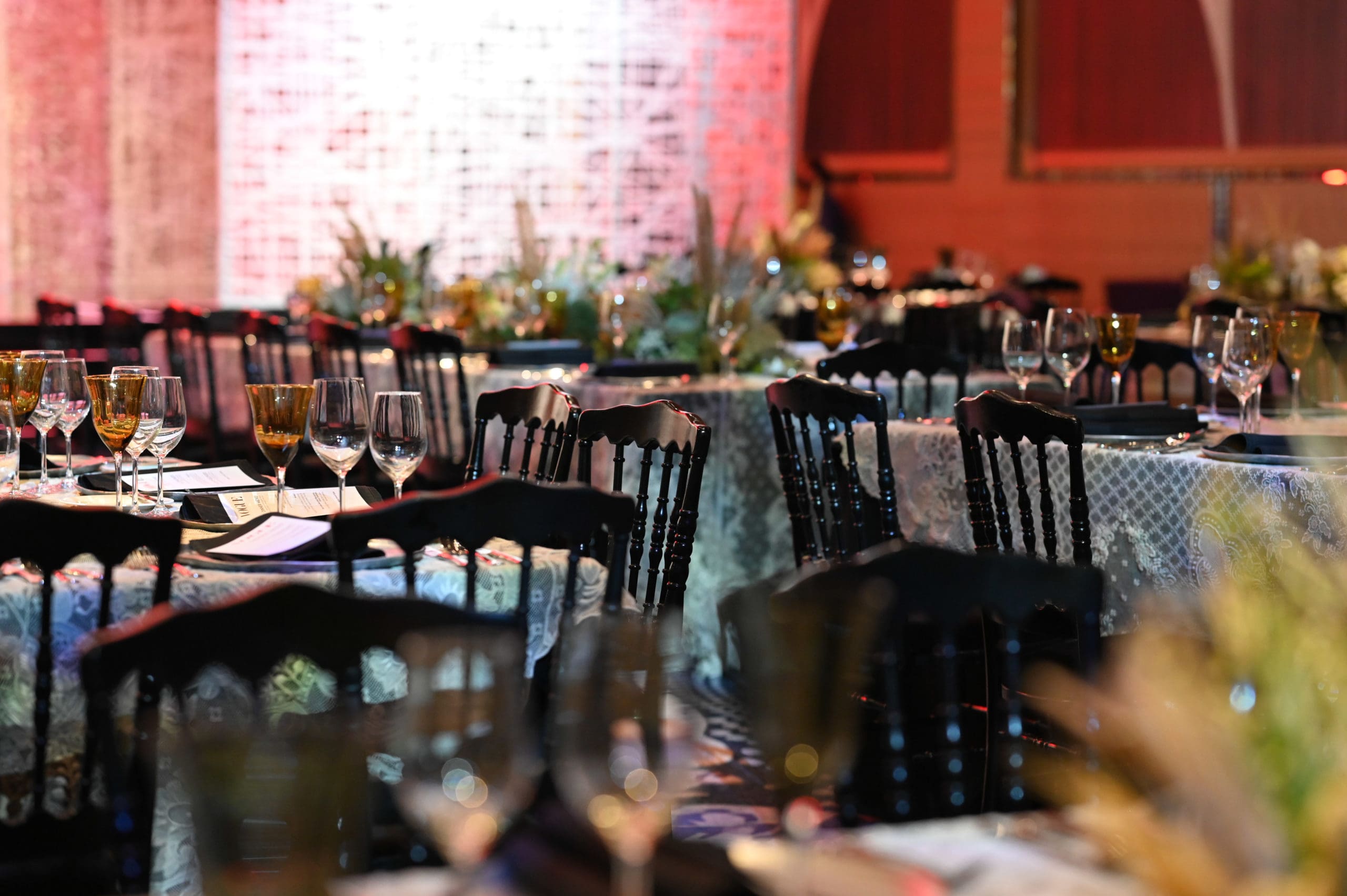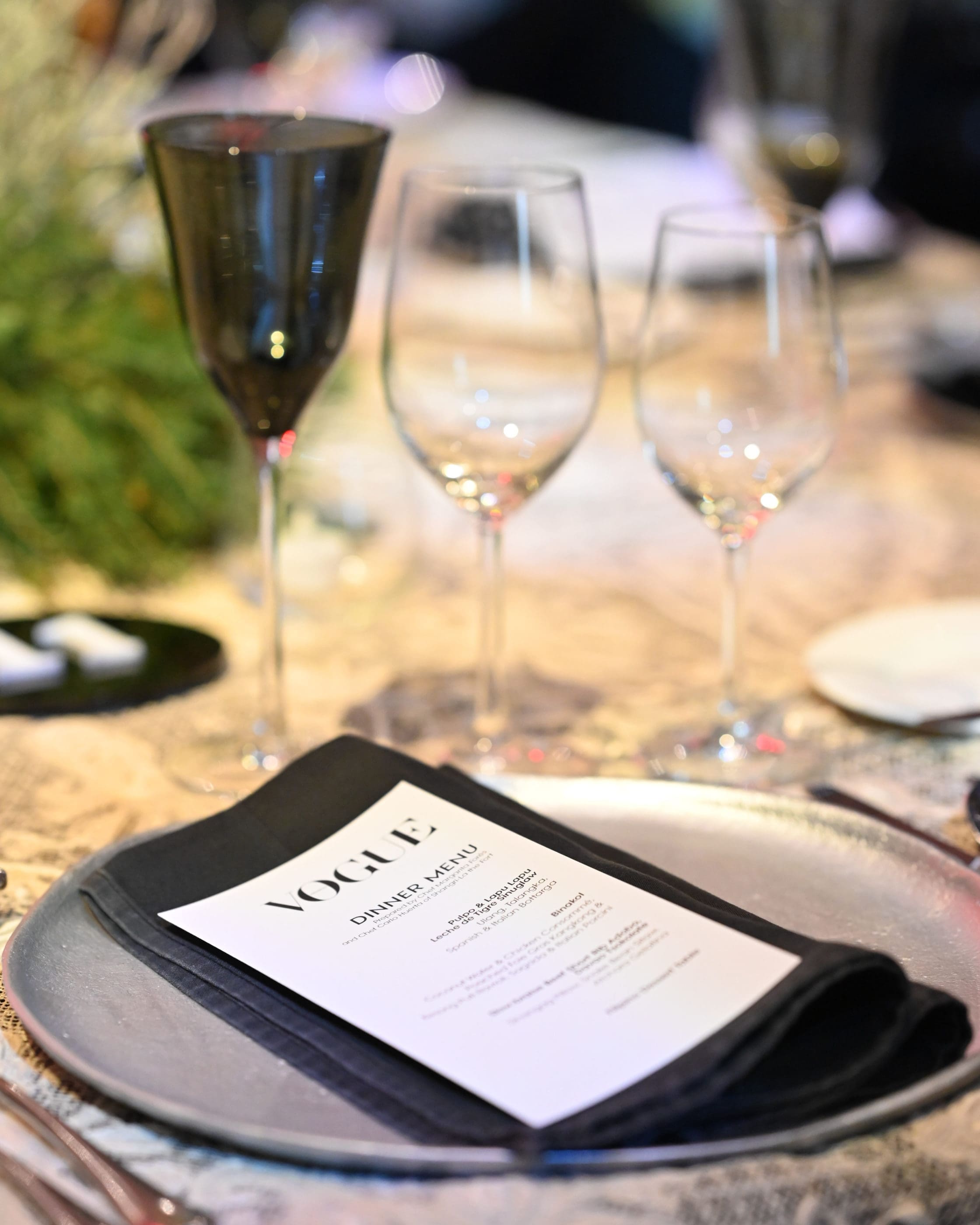Daniel Tan
The chefs discuss the inspiration behind the three-course dinner at the Vogue Philippines Gala.
At the Vogue Philippines Gala dinner, where the maiden issue was revealed to the public, each bite of artfully laid shellfish, warm umami broth, and even adobo and rice, was reminiscent of nostalgic meals from childhood. But thanks to Margarita Fores, 2016’s Asia’s Best Female Chef awardee, and Shangri-La The Fort’s head chef, Carlos Huerta, the familiar meals were punctuated with completely new flavors and pairings that made each dish an adventure.
For Fores, the task to collaborate with Huerta, who is himself Peruvian, and present Filipino cuisine with international influences was a welcome challenge. Speaking about their collaboration, Fores says, “This was a chance for us to celebrate the parallels—and actually, the word Bea [Valdes] used was really [the] ‘cross-pollination’ of cultures.” The result? A poetic tribute to the fare of our motherland, which blended perfectly with the theme of the Maiden Issue of highlighting the beauty and core values of the Philippine landscape while introducing the magazine as a global powerhouse.
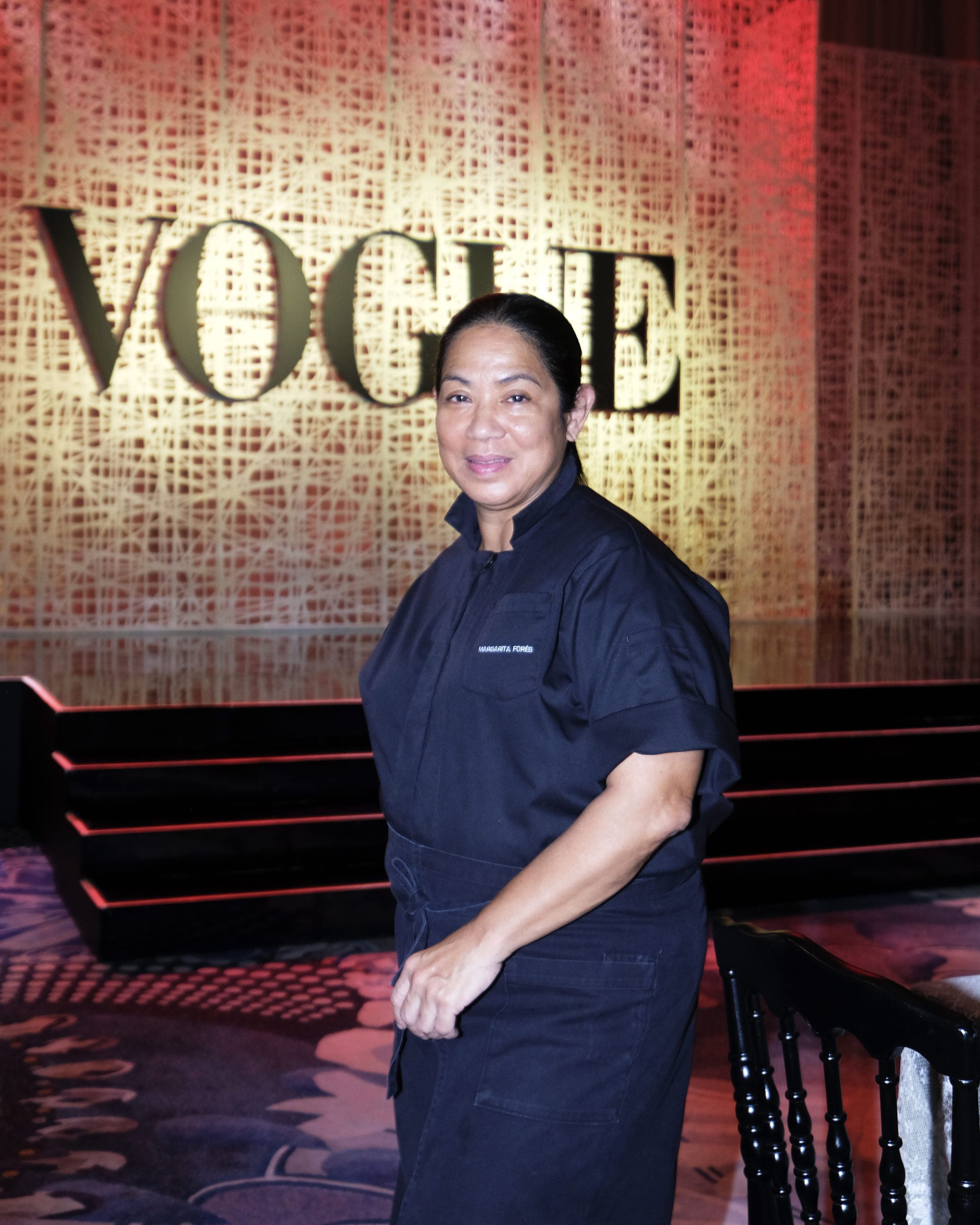
Each selection of dishes was an opportunity for both chefs to inject precious memories of their respective homes, including the appetizers, which were circulated during cocktail hour. With the lumpiang ubod, for example, Fores saw the opportunity to add tulapho (Ilonggo chicharon) from Negros, while the mini blue crab cakes featured a mix of black garlic aioli, Philippine fish roe, and Spanish Bottarga. Another appetizer was the seared tuna tataki made with sustainable yellowfin tuna that Fores served on an Adlai crisp. Of the local superfood, the chef explains, “It’s such a sustainable product because it helps farmers that are not in areas where rice grows well.”

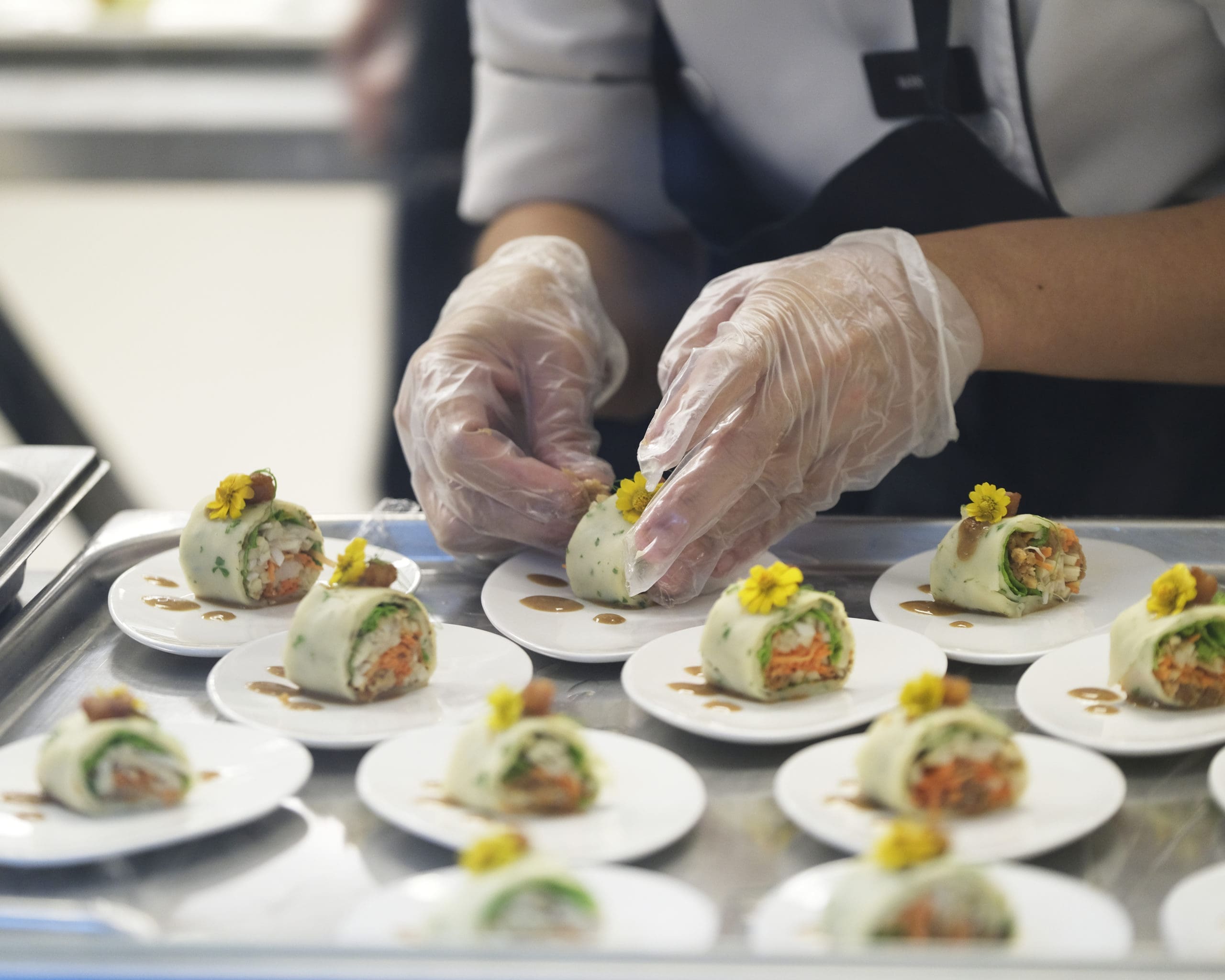

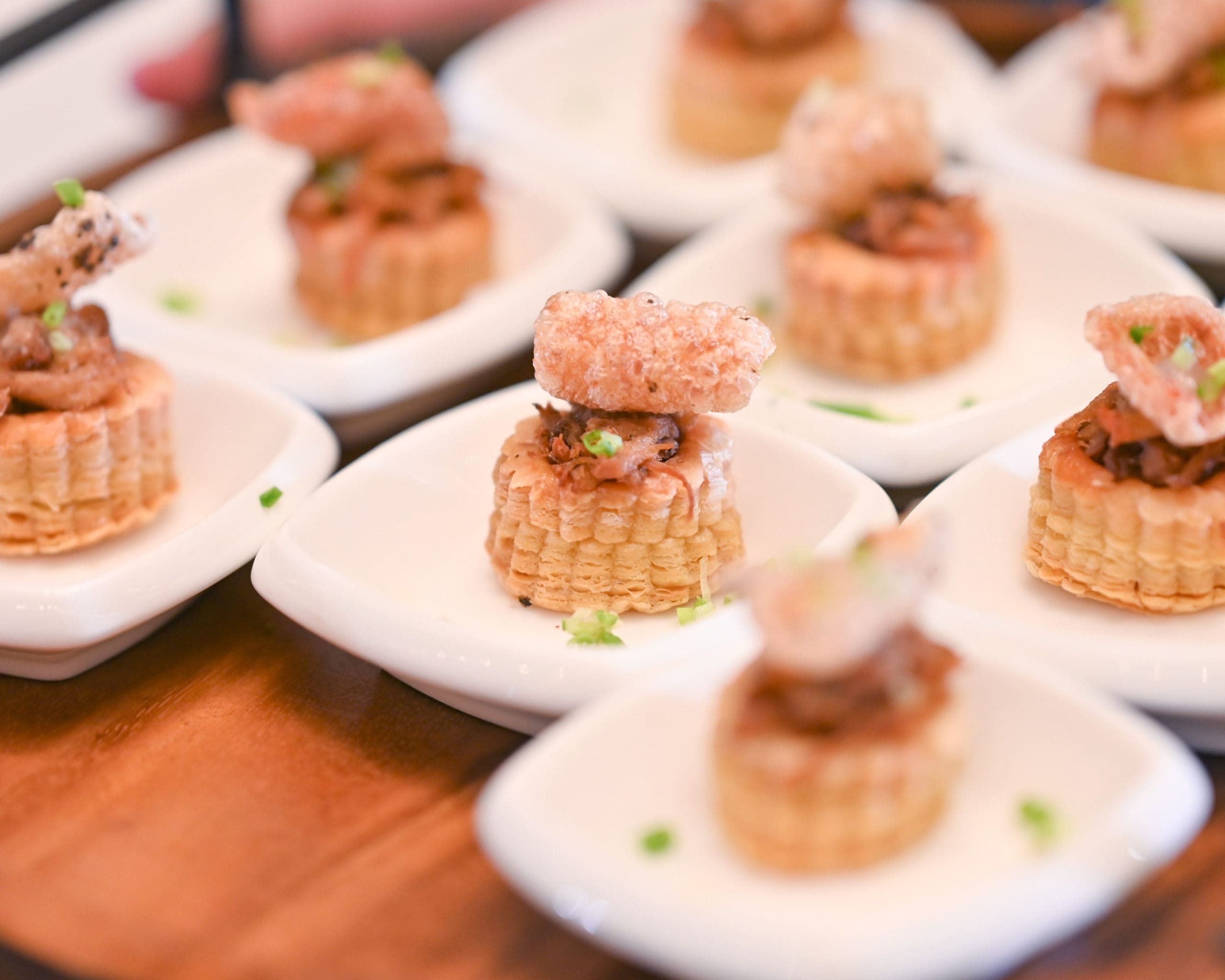
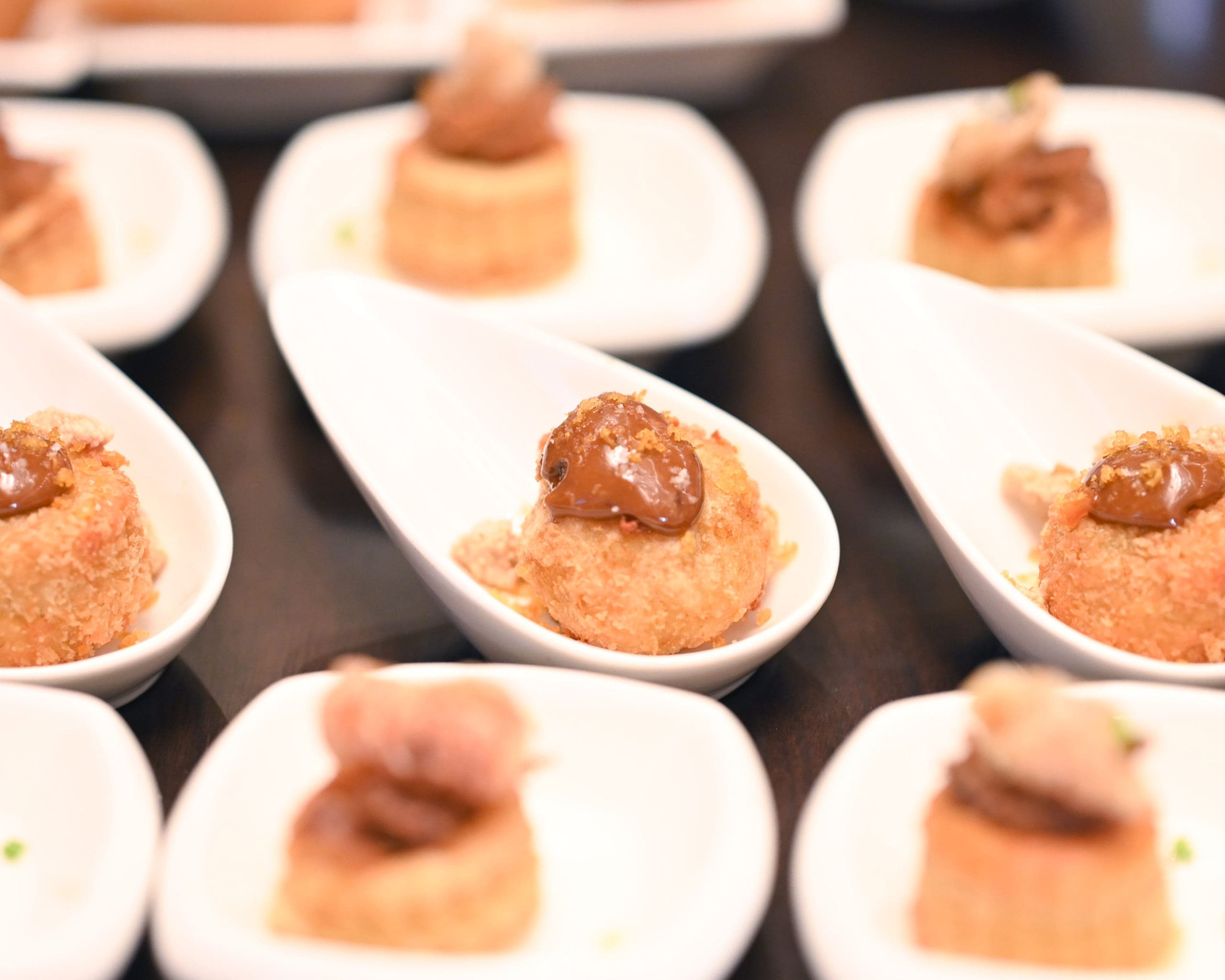
The first dish, which the chefs named “Sinuglaw, Pulpo & Lapu Lapu Leche de Tigre, Ulang, Talangka,” was a seafood symphony ode to Fores’ first experience with the dish in Davao, which “shocked” the chef. “Sinuglaw” is a combination of some type of grilled dish and kinilaw or what some call “Filipino ceviche.” She says, “I was kinda shocked because they made the kinilaw with tanigue, then they marinated it in, of course, chili and calamansi, then they put a little gata. But, they had little cubes of cheddar cheese in the siniglaw, together with the inihaw na baboy!”
This homage led to adding cambozola espuma to the octopus dish alongside a lightly grilled river prawn and Italian Bottarga. Ceviche is also traditionally a Peruvian dish so the first-course choice was, per Fores, a “marriage of cultures.”

The second dish was a showstopping rendition of a comforting dish familiar to many: Binakol. The soup was served in a coconut hull along with a kangkong ravioli filled with porcini from Italy and Sagada and smoked kesong puti. At the last minute, the chefs dropped in a piece of raw foie gras that poached perfectly in the time the waiters took to get from the kitchen to the tables.
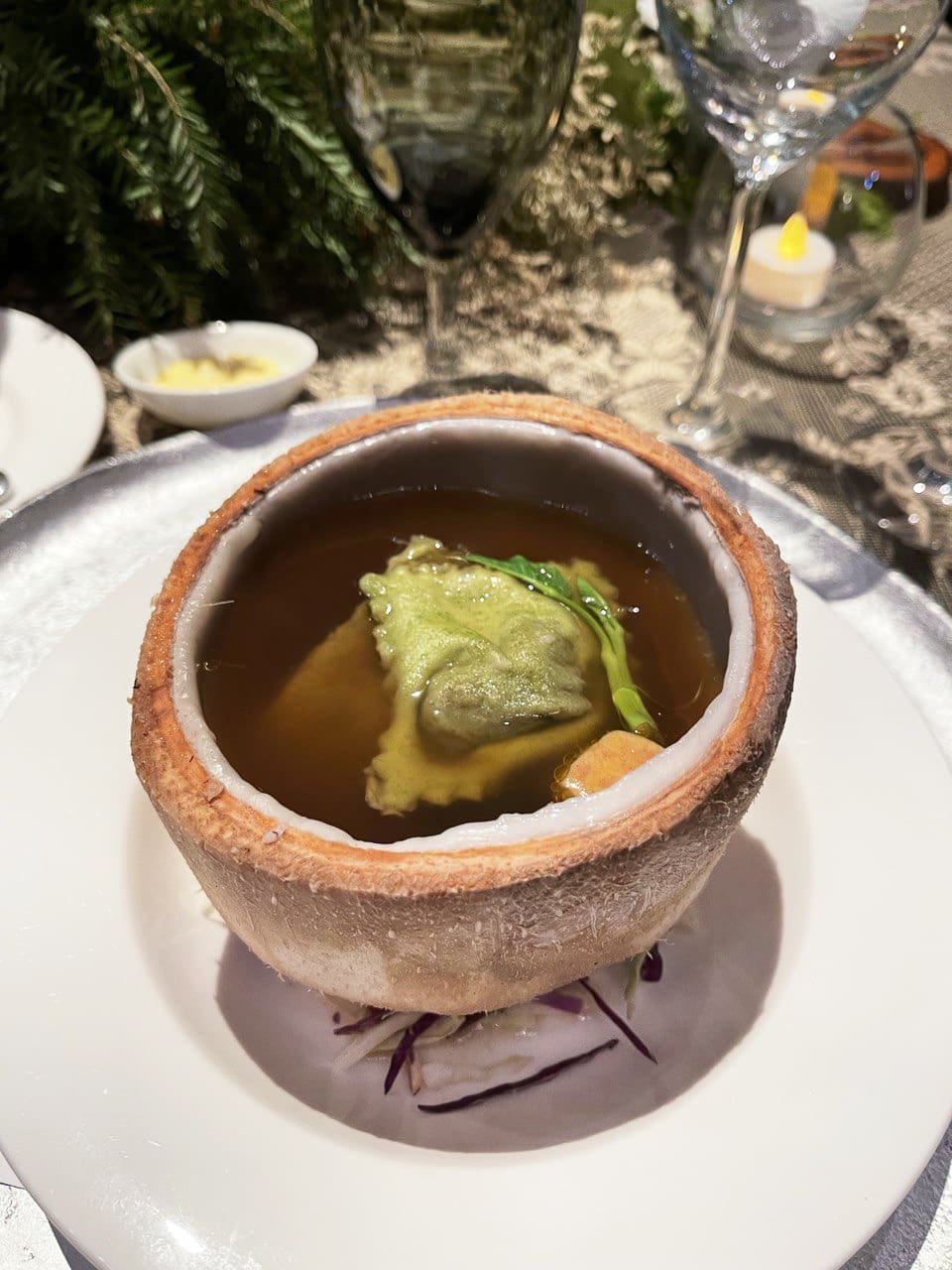
The entrée was a take on adobo and rice, a Filipino household staple. The chefs braised the beef for almost 48 hours, resulting in a mouth-melting piece of meat on every plate. For the sauce, Fores added an unlikely ingredient—chocolate. The restauranteur explains, “I love doing my adobo with Philippine chocolate because it reminds you of a mole. But at the same time, chef Carlo said there’s an ancient Peruvian dish [with chocolate].” A knot of sitaw, a strip of blanched bok choy, and piped atsara atop a sinangag pillow—rice wrapped in Vietnamese spring roll wrapper—also lined the plate.
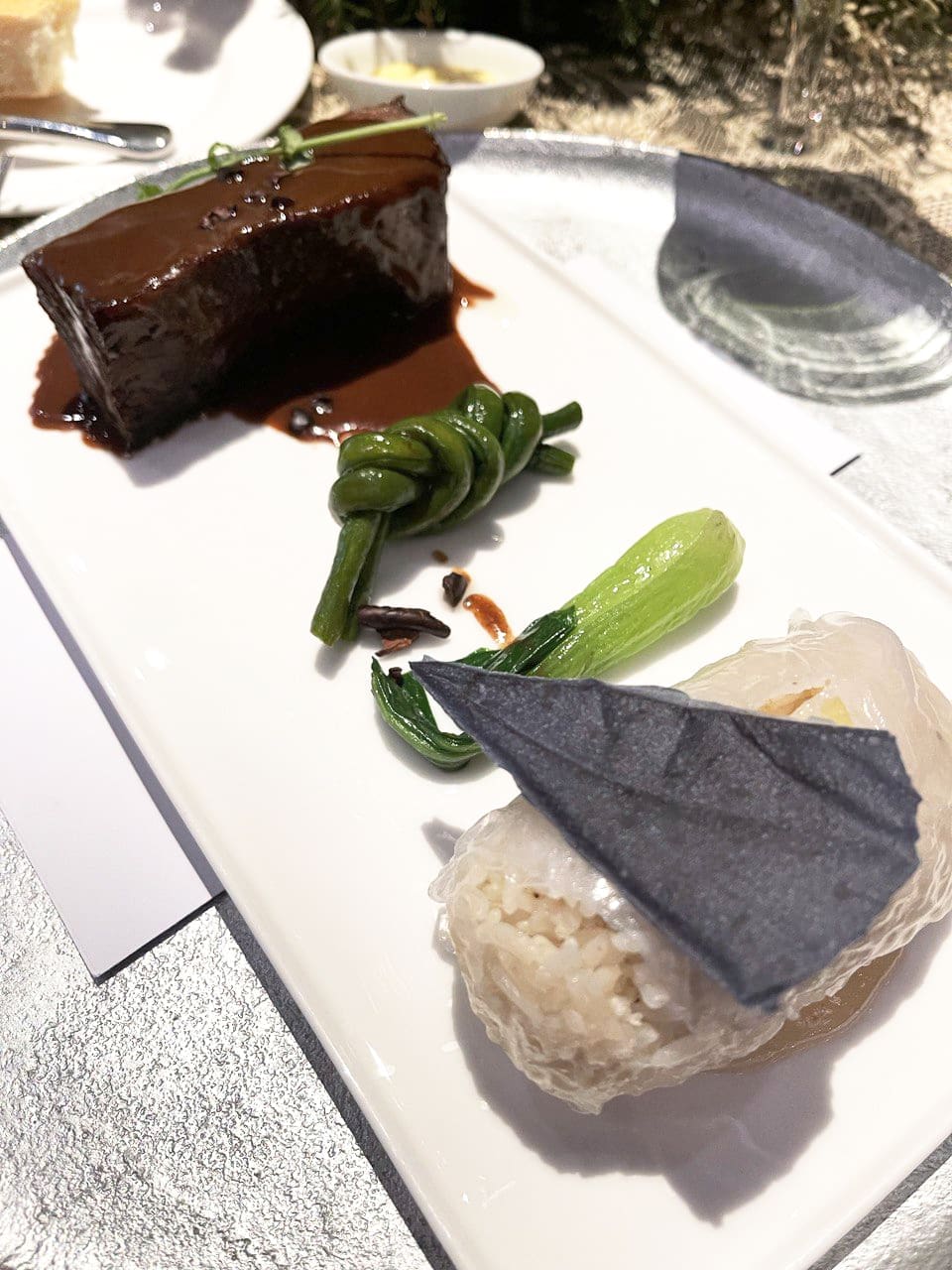
After the last course, the crowd was led into the exhibit hall through the stage by dancers, where the first cover of Vogue Philippines was unveiled. One end of the area featured a dessert bar with gourmet takes on Filipino desserts like taho, sapin-sapin, and suman. Fores also whipped up special sweets, like the 24-Month Parmigiano Reggiano Cassava and Pili-crusted Mille-Feuille. In true pika-pika fashion, guests were free to snack away at the bite-sized desserts—with many ditching formalities to eat the treats by hand.
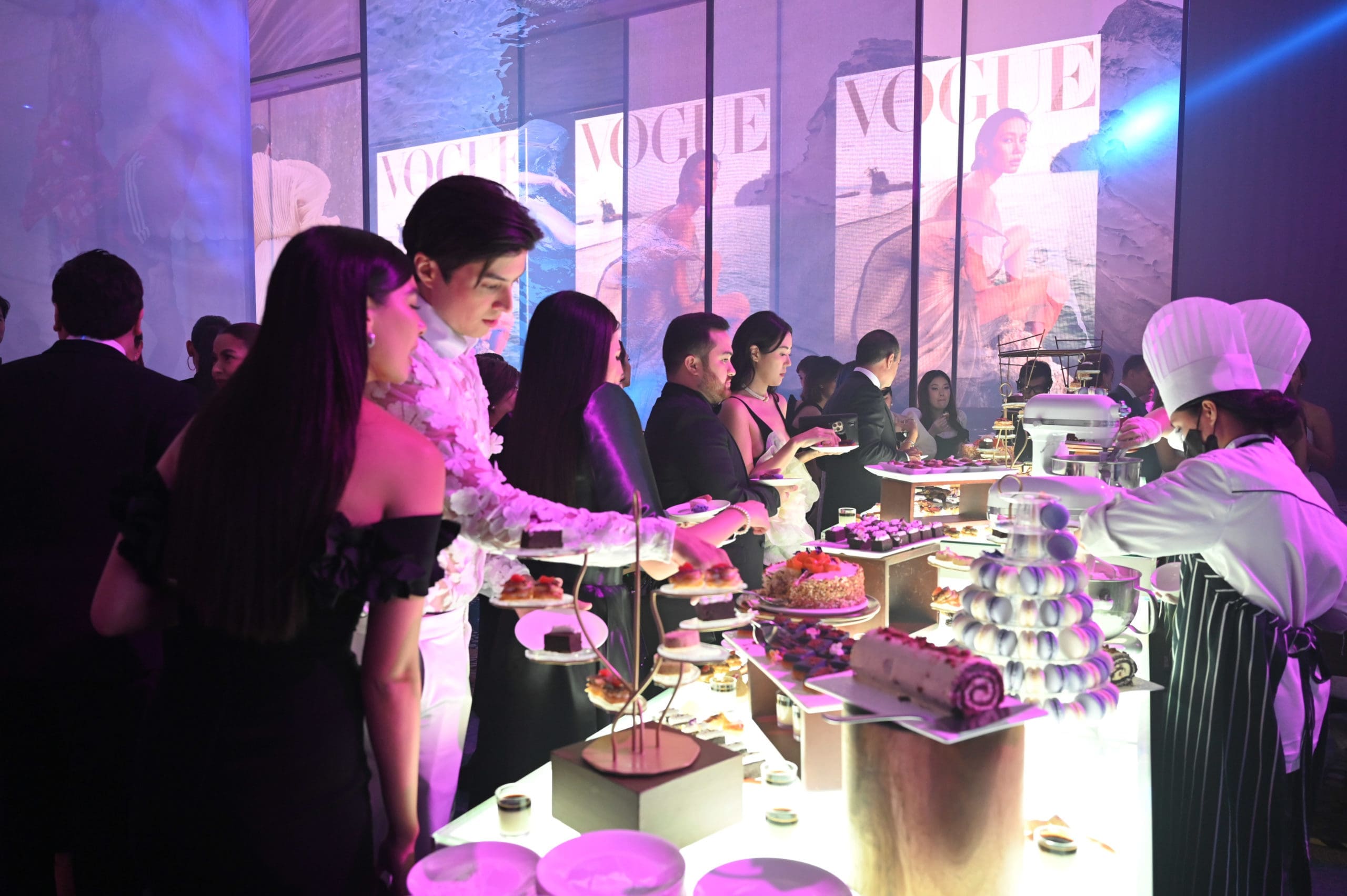
Chef Fores herself provided the linens, plates, and chargers for the evening, while Vogue Philippines Editor-in-Chief Bea Valdes loaned heirloom hand-embroidered piña fabric for tablecloths. Fores explains, “Bea had her piña and we were thinking—how can we showcase the craftsmanship of Filipino artisans, and at the same time, put it in such a modern setting?” The result was a beautiful curation of traditional textile crafts that juxtaposed the modern handwoven paper backdrop on stage by Wataru Studios.
